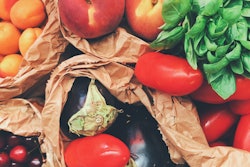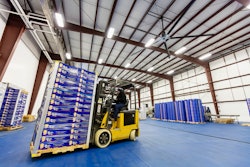
It’s no exaggeration that the Coronavirus disease (COVID-19) pandemic has profoundly changed the way we live, work and do business—for the near term and, likely, for years to come.
It has also deeply impacted how we view our food system and its vulnerabilities. As lockdown measures and the rapid spread of the virus through processing facilities disrupted traditional supply chains, the ripple effects were felt by producers, retailers and consumers alike.
Short term, the food industry suffered mismatches of supply and demand and too much food ended up getting ploughed under in farmers’ fields or spoiling in warehouses. In the early days of the pandemic, shoppers encountered bare supermarket shelves, despite the fact there was no real shortage of food. And, food that was originally destined for foodservice and restaurant customers that might have gone directly to consumers was packaged in unwieldly bulk quantities—think big slabs of meat.
Here’s the opportunity for the industry to do so much more—becoming more efficient and environmentally responsible for the long run.
Looking to the future, what’s needed is an agile food system. It must be flexible and adaptive to unexpected disruptions. It must eliminate food waste and reduce the time and distance that food must travel. It also should integrate locally produced food more seamlessly into the supply chain and ensure food security for the world’s poor. Consider that by 2050, the world population will reach 9 billion, putting even more pressure on global food resources, from crops to livestock to fisheries.
When the COVID-19 pandemic hit with hurricane force, foodservice operations and institutions stopped placing orders, and the food supply in warehouses piled up. At the same time, consumers faced stark shortages on supermarket shelves. Instead, companies adapted their operations and logistics model to serve different channels, and changed how they packaged, delivered, marketed and accepted payment. It’s this adaptable and flexible operational capacity that has allowed some companies to launch a direct-to-consumer business.
Unexpected shifts in supply and demand call for flexibility on the part of both producers and consumers, who have come to expect the food they want when they want it—regardless of availability or seasonality. Traditionally, most of the food industry has made its decisions based on a consistent forecast, considering prior year sales, seasonality and other market conditions. The world we live in today calls for important changes in how we move food from producer to consumer for tomorrow.
The three elements necessary in creating an agile food system are flexible operations, data and technology and smart and adaptable packaging. Incorporating these elements into a food supply chain makes food systems more resilient and increases domestic food security. To see the impacts of these changes will require individual players in the supply chain to evolve and adapt to the New Normal of uncertainty. How can you make your food business more adaptable to rapidly changing business conditions? The process of forecasting and planning must keep pace with the changing market. Today that might be monthly, weekly, or in the case of COVID-19 daily adjustments.
Consider the following:
1. Can you collect, collate and display your data in a timely manner?
2. Do you have a mechanism for stakeholders to provide feedback and identify resource needs or roadblocks?
3. Is your team aligned on your ultimate objectives, so they are comfortable changing the plan based on new information?
Technology will no doubt play an important role in increasing the agility of the food system. Effective use of data, for example, can help companies respond quickly to supply and demand issues, reduce food waste by improving sell-through rates with dynamic pricing and reducing oversupply with real-time demand information.
Smart packaging can tell consumers if a carton of eggs, for example, is still fresh and safe to eat—going beyond the traditional sell-by dates.
While data is key to an agile future, there’s also the dilemma of packaging formats. When COVID-19 hit, many foodservice producers had already made major investments to produce and package their food in large multi-serving formats, notes a recent report from McKinsey.
An adaptable approach to packaging would allow food originally intended for restaurant and institutional use to be repackaged into more manageable sizes for consumers.
Here’s an area where future tech innovation could make a meaningful difference.
Makeshift solutions—like manually breaking down bulk meat into smaller portions for consumers—doesn’t fully address the need.
Modular packaging solutions allow smaller packages of individual items to be stacked into larger parcels. But, that often requires the use of more packaging with impacts on cost and the environment.
To be sure, the food system won’t achieve agility overnight, but by viewing the current crisis as an opportunity for transformation, the industry can ensure that it wastes less food, consumes more wisely and conserves valuable resources by incorporating the elements of an agile food supply chain.


















